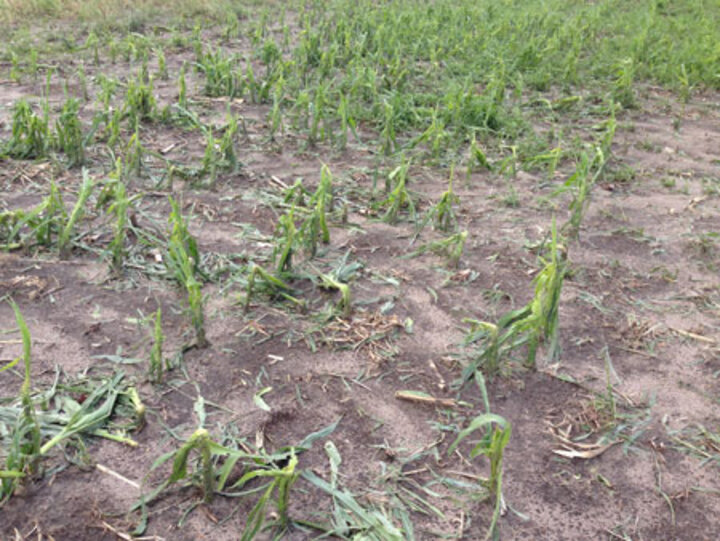
Figure 1. Corn seedlings damaged by hail June 3. (Photo courtesy of Kyle Broderick)
Following this week's widespread severe weather, many growers have asked about using a foliar fungicide to protect the remaining injured foliage from infection by pathogens. There are many factors to consider before making a fungicide application for this purpose and decisions shouldn't be made in haste. In general, foliar fungicide use following hail is not necessary for several reasons.
Many of the diseases that are favored by wounding are not controlled with foliar fungicides, such as those caused by bacteria (especially Goss's wilt and blight), common smut, and stalk rots. Furthermore, foliar diseases that can be managed with foliar fungicides, such as gray leaf spot and southern rust, do NOT need wounds for infection. The development of some of these diseases following a hail event might more likely be attributed to the rain and periods of increased relative humidity that accompanied the storm rather than the hail itself.
There is little to no research data from fungicide trials conducted on hailed corn this early in the season at these early growth stages. Most of the trials were done much later in the season (V12-R2) and results are probably not representative of our current scenario. The most recent examples are summarized below.
A study was conducted by Carl Bradley at the University of Illinois in 2007-2008 to evaluate the effects of fungicide applications in simulated hail-injured corn on gray leaf spot severity and yield. In that study, fungicide applications did not statistically increase yield when applied on corn that was damaged (Table 1) to simulate hail injury.
A more recent study was conducted in Iowa in 2012. In the single year of this study, they did observe an increase in yield when a fungicide was applied to corn following a hail event, although the research was conducted later in the season (R2 – blister stage). This is during the most common fungicide treatment window for most Nebraska producers and corresponds to when common foliar diseases become more active, like gray leaf spot.
More Information
For more information, see
- Effect of foliar fungicides on corn with simulated hail damage, by C.A. Bradley and K.A. Ames in the journal of Plant Disease, 2010, (94:83-86).
- Plant Disease Management section of CropWatch, particularly the corn section.
Tamra A. Jackson-Ziems
Extension Plant Pathologist
| Table 1. Effect of simulated hail damage and foliar fungicides applied at tassel emergence on gray leaf spot severity and yield of a susceptible corn hybrid near Champaign, Illinois, in 2007. | ||||
| Simulated Hail1 | Fungicide | Rate/Acre | GLS Severity2 | Yield (bu/Acre) |
| No | Untreated | 57 | 174 | |
| Headline | 6 fl oz | 33 | 179 | |
| Quadris | 6 fl oz | 42 | 170 | |
| Quilt | 14 fl oz | 40 | 155 | |
| Yes | Untreated | 62 | 141 | |
| Headline | 6 fl oz | 48 | 144 | |
| Quadris | 6 fl oz | 47 | 142 | |
| Quilt | 14 fl oz | 35 | 140 | |
| LSD | 12 | 11 | ||
| 1 Hail was simulated by damaging corn plants with a weed-eater type string mower. 2. Gray leaf spot severity (0-100% scale). 3. Fisher's protected least significant difference (α = 0.05). 4. Bradley and Ames, 2008.Foliar Fungicides in Corn Production: A Look at Local and Regional Data. Proceedings of the 2008 Illinois Crop Protection Technology Conference. Pp 81-85. |
||||
